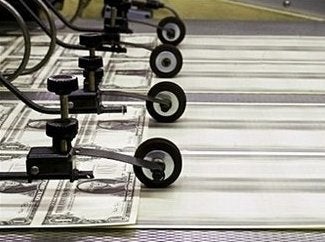
The whole spiel really is all a little touching, and quite impressive-especially the psychoanalysis part. What it isn't is new. Or maybe commercial media pundits have been relieved of the burden of editors who say things like, "wait, haven't I seen that before? And before. And before?" Like about a zillion times since David Swensen touched off this whole debate in January (which frankly seems like it was in the Pleistocene)?
Ok, from the top. Shafer has two arguments.
The first is that anyone who funds this stuff must want something. That is true. I think most of us want quality journalism. Just like I give money to Ballet Austin because I like to see artistic athleticism and pretty women. The second is that news publications should attract readers. Wait, let me get a pen. Need to ....write....that one....down.
But seriously, where Shafer and I really come apart is here:
But the most successful, most heavily decorated, and longest-lived news outlets in the American journalism have been overtly commercial.
First of all, that's precisely not true. Both WaPo and NYT are only sort of overtly commercial, in the sense that in each case a family controls the vote, and so any informed buyer of either stock can see a big, fat, caveat emptor stenciled on the certificate. And even if it were true, c'mon: if the past were necessarily prologue, why would all these things be going belly-up?
There is here an interesting debate about cause and effect. Shafer seems to be arguing that only enterprises focused on the creation of shareholder wealth can produce good journalism. My argument is that the forty years between Kennedy and Clinton were an accident of economic and demographic history, resulting in a temporary but highly profitable industry structure for the papers that dominated their markets. Great journalism thrived in a relatively monopolistic industry structure, because there was plenty to go around for editors and shareholders (God and Mammon, again).
Newsrooms of this halcyon era, untroubled by (and sometimes in separate elevator banks from) the boys from ad sales, actually operated far more like nonprofits than they do today. But quality journalism remained the tail on the economic dog of monopoly (Philip Meyer's labored attempts at proving the opposite notwithstanding). A monopolistic industry structure persisted as long as the cost to replicate a production and distribution infrastructure remained high. Enter near universal broadband access; marginal distribution costs trend toward zero, and suddenly the news industry is super-fragmented, trending toward what economists call "perfect competition." Exit monopoly profits, and exit the luxury that was Watergate-era public interest journalism.
But, never mind all that. I don't think Jack Shafer is interested in much of a serious debate. But since he is convinced that my pocket has been picked of my silly money, all the more reason to visit texastribune.org and become a founding member. Better yet, do it in Jack's name!